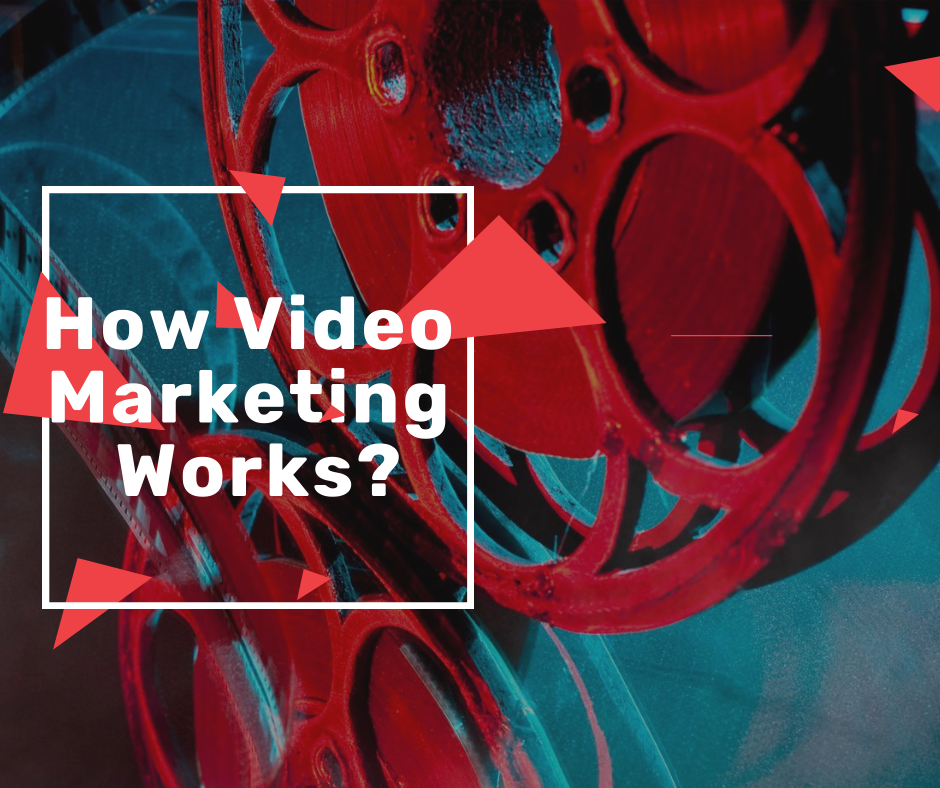
Video marketing has come a long way since its inception, and it continues to evolve. From traditional TV commercials to social media video ads, and now to live streaming and interactive videos, the possibilities for using Visuals in marketing are endless. As technology advances and consumer preferences shift, we can expect Visual advertising to keep adapting and transforming in the years to come.
What is Video Marketing?
Video marketing is a digital marketing strategy that uses Visuals content to promote and market products or services. It involves creating and sharing videos that showcase a brand, product, or service to a target audience. Video marketing can be used for a variety of purposes, including increasing brand awareness, generating leads, educating consumers, and driving sales. It can be used on various platforms such as social media, email Advertising, websites, and video hosting sites.
How Video Marketing Works?

Video marketing works by creating and sharing Visuals content to promote a brand, product, or service. The goal of video marketing is to engage with the target audience and encourage them to take action, such as making a purchase or signing up for a service. There are several key steps involved in a successful video marketing campaign:
1. Define the target audience
The first step in video marketing is to identify the target audience. This involves understanding who the ideal customer is and what their interests and needs are. By understanding the target audience, businesses can create video content that is relevant and engaging.
2. Determine the video’s purpose
The next step is to determine the purpose of the video. This could be to raise brand awareness, generate leads, or promote a specific product or service. Businesses can create content tailored to achieve their specific marketing goals by identifying the purpose of their visuals.
3. Create the video content
The third step is to create the video content. This involves developing a script, selecting the appropriate visuals, and recording the video. The information presented should be interesting, insightful, and aesthetically appealing.
4. Promote the video
Once the video content has been created, it is important to promote it effectively. This involves sharing the Visuals on social media platforms, embedding it on the company website, and incorporating it into email marketing campaigns.
5. Analyze the results
The final step is to analyze the results of the Visual advertising campaign. Metrics like views, engagement rates, and conversion rates must be tracked in order to do this. By analyzing the results, businesses can identify areas for improvement and make adjustments to their video marketing strategy.
Benefits of Video Marketing

Video marketing offers a range of benefits for businesses, including:
1. Increased engagement
Video content is more engaging than text or static images, which can help to capture the attention of the target audience. By creating videos that are visually appealing and informative, businesses can keep their audience engaged for longer periods of time.
2. Improved SEO
Video content can help to improve search engine rankings, as search engines prioritize websites with video content. By optimizing video content for SEO, businesses can improve their visibility online and attract more traffic to their website.
3. Higher conversion rates
Video content has been shown to be more effective at driving conversions than text or static images. According to a study by Wyzowl, 84% of consumers have been convinced to make a purchase after watching a brand’s video.
4. Increased brand awareness
Video content can help boost brand recognition by reaching a larger audience and making a lasting impact. By creating videos that showcase the brand’s personality and values, businesses can build a stronger connection with their target audience.
5. Cost-effective
Video marketing can be a cost-effective way to promote a brand or product. With advances in technology, it is now easier than ever to create high-quality video content without the need for expensive equipment or software.
6. Versatile
Video content can be used in a variety of ways, including social media, email Advertising, and on the company website. This makes it a versatile marketing tool that can be adapted to suit different marketing strategies and objectives.
Challenges of Video Marketing

While video marketing offers many benefits, there are also some challenges that businesses may face when implementing a Visual advertising strategy:
1. High production costs
While video marketing can be cost-effective, creating high-quality Visuals content can be expensive. This can be a barrier for small businesses with limited budgets.
2. Limited attention spans
In today’s fast-paced world, many consumers have limited attention spans. This means that businesses need to create video content that is engaging and captures the viewer’s attention within the first few seconds.
3. Difficulty measuring ROI
Measuring the return on investment (ROI) of a video marketing campaign can be challenging. While metrics such as views and engagement rates can provide some indication of success, it can be difficult to quantify the impact on sales and revenue.
4. High competition
With the growing popularity of video marketing, businesses face increased competition for their target audience’s attention. This means that businesses need to create high-quality video content that stands out from the crowd.
5. Technical challenges
Creating and promoting video content can also present technical challenges, such as the need to optimize video content for different platforms and devices, and ensure that videos load quickly and play smoothly.
6. Regulatory compliance
Video marketing must also comply with regulatory requirements such as data privacy laws, copyright laws, and advertising regulations. Failure to comply with these regulations can result in legal penalties and damage to the brand’s reputation.
Conclusion
In conclusion, video marketing has become an increasingly important tool for businesses looking to promote their brand, engage with their target audience, and drive results. By creating high-quality video content that is engaging, informative, and visually appealing, businesses can connect with their target audience and drive conversions.
While video marketing offers many benefits, there are also challenges that businesses need to be aware of, such as high production costs, limited attention spans, and difficulty measuring ROI. However, by taking steps to address these challenges, such as optimizing Visuals content for different platforms and devices and ensuring regulatory compliance, businesses can create successful Visual advertising campaigns.
Overall, video marketing is a versatile and effective marketing tool that can help businesses to achieve their Advertising objectives and stay ahead of the competition. With the right strategy and approach, businesses of all sizes can harness the power of Visual advertising and achieve success in their marketing efforts.
FAQ
Q. What kinds of videos are utilized in video marketing?
A. Various types of videos, such as explainer videos, product demos, testimonials, brand videos, and social media videos, serve different purposes and can be used at different stages of the marketing funnel in video marketing.
Q. How long should a marketing video be?
A. The length of marketing Visuals depends on their purpose and the platform they will be shared on. Generally, videos for social media should be shorter (30-60 seconds), while videos for websites or email marketing can be longer (1-2 minutes). However, the most important thing is to keep the video engaging and informative, regardless of its length.
Q. How can I measure the effectiveness of my video marketing campaigns?
A. You can measure the effectiveness of your Visual advertising campaigns by tracking metrics such as views, engagement, click-through rates, and conversions. Analyzing these metrics can help you determine what is working and what needs improvement in your video marketing strategy.
Q. What are some guidelines for producing powerful marketing videos?
A. Some tips for creating effective marketing videos include defining your audience and message, keeping the Visuals short and engaging, using high-quality visuals and sound, and including a call-to-action. It’s also important to test and iterate your videos to see what resonates best with your audience.


